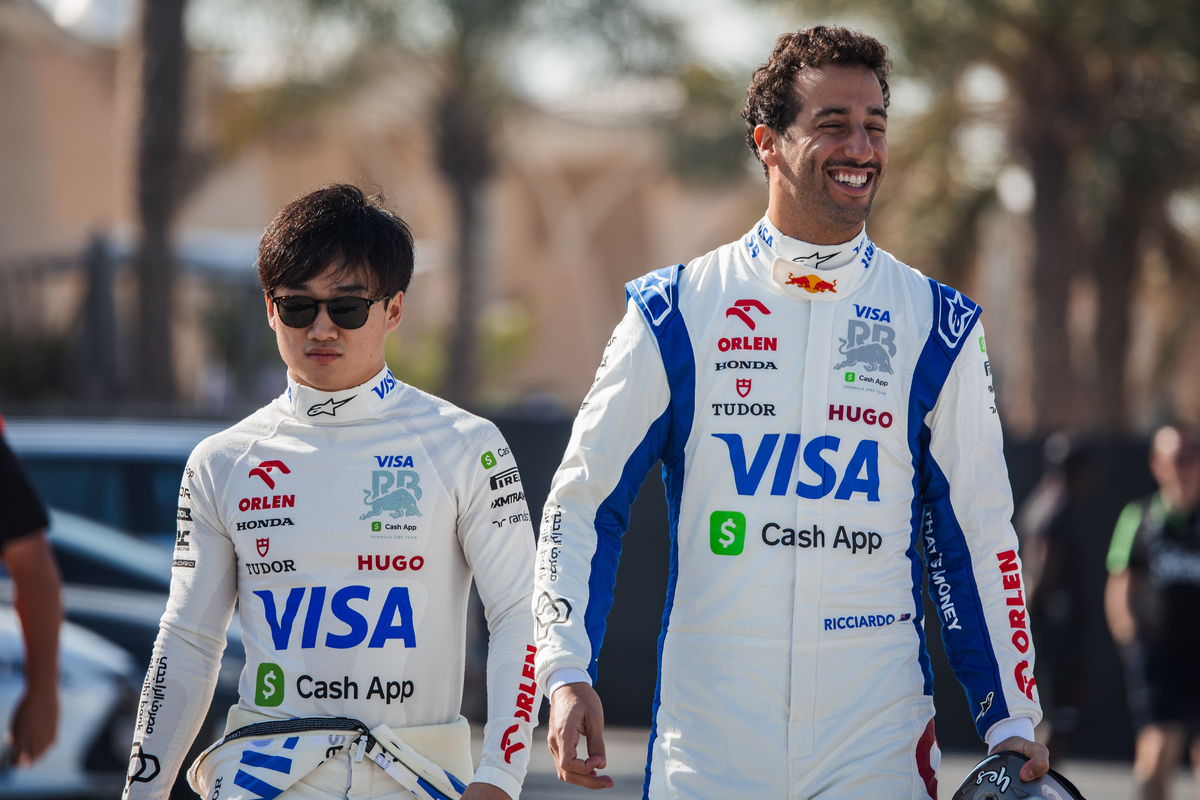

Since Red Bull acquired the Minardi squad for 2006, the Faenza operation has been used to blood young drivers ahead of their promotion to the senior team.
Sebastian Vettel, Daniel Ricciardo, Max Verstappen, and a host of others have been through the programme while others have used it as a jumping off point – such as Carlos Sainz.
However, following the death of Red Bull patriarch Dietrich Mateschitz, who had been happy to bankroll the team, a new model was put in place.
That has seen the operation given a new identity, a deliberately non-commercial brand so it can offer partners title sponsorship rights as it has done this year with Visa and CashApp.
It reflects the team’s redefined position within F1 and Red Bull, where it is expected to perform and pay its way.
The appointment of Daniel Ricciardo last year was part of that, bringing in experience to stabilise the team and offer it a degree of depth and direction it hasn’t had.
Only it’s not as simple as that. While RB has been positioned to stand on its own, stepping out of the shadow of Red Bull Racing, part of its remit it to continue developing young drivers for the sister team.
“If we are honest, it’s part of our mission still to develop drivers for the top team,” Peter Bayer, RB CEO, told Speedcafe.
“So if we were to develop Daniel back into the old Daniel as he is now, and give him the opportunity to show to the world what he’s capable of, and then next year for example makes a move to Red Bull, I think we could tick a box and say we’ve done the job.
“We would have still Yuki [Tsunoda], who by then will be the experienced driver because he’s been here for five years, and we can bring another young driver, potentially Liam [Lawson].”
RB then has conflicting measures of success, where it must be able to perform at a level such that it is self-sustaining while simultaneously developing assets that will, by design, be taken from it.
A critical component in that is improving the base level performance. It’s no longer acceptable for the squad to circulate towards the back safe in the knowledge that driver development is more important than results.
To attract and maintain sponsors and therefore pay the bills, it must deliver on track.
That is why Red Bull has been investing in personnel and facilities and is looking to deepen its connection to Red Bull Racing where the regulations allow – a relationship that doesn’t sit well with all its rivals.
But it does mean a fundamental shift if what the team wants from its drivers, and likely gone are the days of two high-quality youngsters battling it out for a seat in the senior team.
Instead, to maximise performance it will look for a strong lead driver who around whom the team will operate, while developing a youngster alongside it.
That may not happen every season.
This year, as the team is in the midst of that rebuilding process, it makes sense to have two experienced drivers regardless of whether they ever make it to Red Bull Racing.
What does it mean for next year, though? That’s too early to say, Bayer reasons.
There is no certainty Lawson will just slot into the drive and it is a distinct possibility that RB will retain Ricciardo and Tsunoda for 2025, for a number of reasons.
First of those is that the driver lineup must serve the needs of the team, any additional benefit to the broader Red Bull Racing programme is now a secondary consideration.
And there’s also the consideration of what Red Bull Racing needs at any given moment.
Currently, Sergio Perez is performing well enough alongside Max Verstappen at Red Bull Racing and neither Ricciardo nor Tsunoda look a threat to the Mexican.
Even if Perez were to be replaced, his signing is evidence that the Milton Keynes squad will look externally for a replacement if necessary, with Carlos Sainz currently a free agent.
At RB, Ricciardo has admitted to Speedcafe that he’d be happy to remain where he is next year.
And while Tsunoda is performing well, he is unlikely to be promoted with his future thought to be tied with Honda, which switches its focus to Aston Martin for 2026.
There is no longer the same pressure on RB to have a conveyor belt of junior drivers in varying degrees of readiness for promotion.





















Discussion about this post